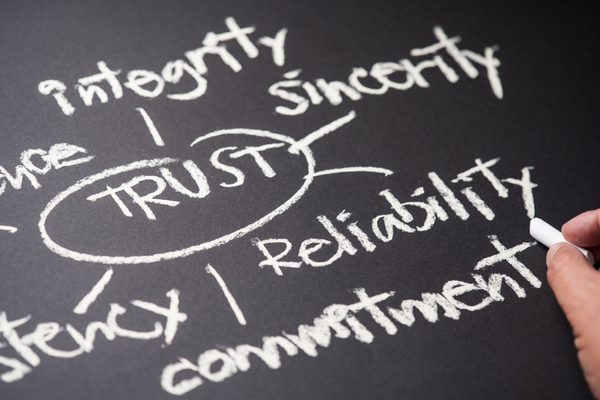Three things your business needs to do to survive the next 5 years
Cyrus Vantoch-Wood at Insurgent argues that the next five years won’t reward caution

Markets are splintering, technology is mutating, and the planet’s patience is wearing thin. The forces that shaped business in years past - scale, efficiency, and unchecked growth - are no longer keys to survival. Greed got us here; imagination will get us out.
For those building the next generation of companies, resilience won’t come from size; it will come from design.
- Design that makes profit and planet pull in the same direction.
- Design that treats pressure as fuel, not fear.
- Design that earns trust because it tells the truth.
Here are three points to consider to become a next-generation success story.
1. Build an investable impact model, not a moral story
Sitting patiently on the sidelines is an ocean of dry powder investment capital. Billions of dollars are available to ventures capable of generating returns while also benefiting planetary health. The reason this capital is gathering dust? Investment decision makers are tired of vague pledges and flashy ESG decks. They long for evidence. Data that shows doing good performs better than doing nothing. Further, there is a lack of proven, scalable, investment-ready companies on the market. You need to be more than a startup with a good idea to attract significant backing.
The businesses that will thrive in the 2030s are those that can measure their impact per unit. Be it per product, pound, or person, and make direct links to cost or growth. Every tonne of carbon avoided, unit of waste reduced, hour of social value created, should be treated as hard currency. When you can prove that your impact efforts are directly strengthening your balance sheet, you stop being a risk and start being an asset.
Investors don’t want saints; they want systems. They want a business that works even without subsidies, where government incentives are gravy, not oxygen. So make your sustainability metrics as rigorous as your financial ones. Run a twin scorecard for profit and planet. Treat regeneration as a business model, not a moral crusade.
The next five years will belong to companies that make their impact investable. Because capital always follows clarity.
2. Replace static plans with adaptive architecture
Forecasting is a parlour trick. The future refuses to sit still long enough to be modelled. Resilience is the only KPI that matters now.
Businesses designed to thrive in the next half-decade are built to flex, not freeze. They don’t rely on five-year plans carved in granite. They operate more like living organisms, sensing, reacting, evolving.
Practically speaking, that means building businesses with a pivot-ready structure built in from the start. Supply chains that automatically re-route overnight in the face of adversity, teams that can redeploy at speed, and financial structures that can bend without shattering. It also means basing decisions and actions on live data. Statistical insight should be a propellant force for business strategy, not a decoration on quarterly PowerPoint reports.
Embrace pre-mortems. Assume change is inevitable and imagine failure before it happens. By preempting and fighting fires before they’re lit, a time will come when you’re riding the current whilst competitors drown.
Speed to adaptation beats size every time. Static strategy is dead. The future belongs to companies built with adaptive architecture at their core.
3. Turn your brand into a behaviour engine
Your brand isn’t a logo. It’s a lever for changing behaviour. Yours, your customers’, and your market’s.
Storytelling is no longer enough as a tool for progress and success; we’re in the era of story-proving. A brand with proof points generated by action beats one with projections, claims and hopes of future proof, every time.
The best brands today don’t rely on taglines; they design behaviour. They don’t suggest you choose the sustainable option; they make the sustainable option the only option.
The businesses that understand this are turning their brands into engines for movement. They act their way into belief, rather than trying to believe their way into action. And as consumers become savvier, truth becomes the ultimate growth strategy.
The pattern of survival
The businesses that will own the next five years share a pattern. They make impact measurable. They make systems flexible. They make brands believable.
The race for survival isn’t one of endurance, but one of evolution. To stay as one of the frontrunners, prioritise substance, profit with purpose, adaptability and action.
Businesses that align with the planet’s limits, harness technology’s speed, and build trust at the human level will shape the decade to come.
The future will belong to the brave. The rest will still be publishing manifestos while the world moves on.
Cyrus Vantoch-Wood is Founder at Insurgent, a venture studio and fund, building net-positive companies where profit and planet reinforce each other
Main image courtesy of iStockPhoto.com and Alex Cristi

Business Reporter Team
Most Viewed
Winston House, 3rd Floor, Units 306-309, 2-4 Dollis Park, London, N3 1HF
23-29 Hendon Lane, London, N3 1RT
020 8349 4363
© 2025, Lyonsdown Limited. Business Reporter® is a registered trademark of Lyonsdown Ltd. VAT registration number: 830519543





